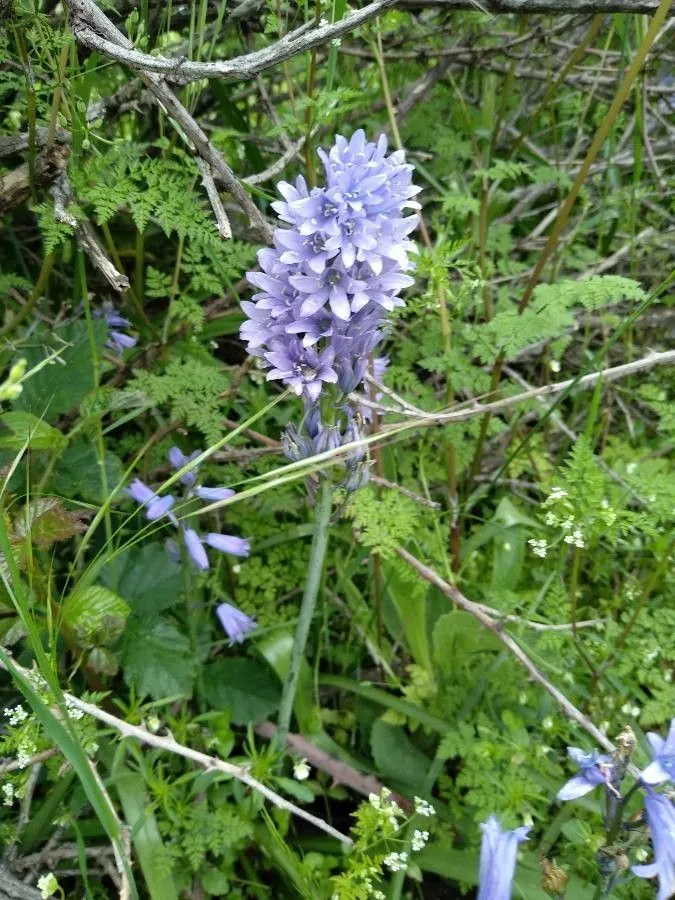
Author: L.
Bibliography: Sp. Pl.: 167 (1753)
Year: 1753
Status: accepted
Rank: species
Genus: Campanula
Vegetable: False
Observations: Europe to Siberia
Bristly bellflower, known scientifically as Campanula cervicaria, is a captivating and resilient plant that belongs to the Campanulaceae family. Documented in 1753 by the renowned botanist Carl Linnaeus in his seminal work “Species Plantarum,” this species has a storied presence that spans from Europe to Siberia.
Characterized by its bristly texture, the bristly bellflower stands out in its natural habitat with an upright growth form and distinctive blue to violet bell-shaped flowers. These blooms emerge from dense clusters that adorn the upper stems, creating a striking display amongst the greenery in meadows, forest edges, and open woodlands. The plant’s robust stems and bristly foliage offer a unique tactile experience, with the coarse hairs providing protection against herbivores and harsh climatic conditions.
Adapted to thrive in diverse environments, Campanula cervicaria is a testament to nature’s ingenuity. Its extensive range across Europe and deep into Siberia highlights its adaptability to various climates and soil types, from temperate zones of Western Europe to the more extreme conditions found in Siberian regions. This adaptability makes it a fascinating subject for botanists and plant enthusiasts alike.
Beyond its aesthetic appeal, the bristly bellflower plays a vital role in its ecosystem. It serves as a source of nectar for pollinators, including bees and butterflies, thus contributing to the biodiversity and ecological balance of its surroundings. Its presence in a habitat indicates a healthy, undisturbed ecosystem, providing insights into the environmental conditions of its growing region.
Whether admired in a natural setting or cultivated in gardens, the bristly bellflower captivates with its unique beauty and hardy nature. Its historical and botanical significance, coupled with its ecological importance, makes Campanula cervicaria a plant worth studying and preserving.
Deu: borstige glockenblume
Eng: bristly bellflower
Dan: hvas klokke
Fin: hirvenkello
Swe: hirvenkello, skogsklocka
Nob: stavklokke
Nno: stavklokke
En: Bristly bellflower, Forest Bellflower
Be: Званочак цвёрдаваласісты
Cs: Zvonek hadincovitý
Da: Hvas klokke
Nl: Ruw klokje
Et: Kare kellukas
Fi: Hirvenkello
Fr: Campanule à fleurs en tête, Campanule cervicaire, Cervicaire
De: Borstige Glockenblume, Hirschglockenblume
Hu: Halvány harangvirág
Is: Hálsaklukka
It: Campanula ruvida
Lt: Šiurkštusis katilėlis
No: Stavklokke
Nb: Stavklokke
Nn: Stavklokke
Pl: Dzwonek szczeciniasty
Sv: Skogsklocka, Hirvenkello
Taken Jun 22, 2020 by Marzia72 (cc-by-sa)
Taken Jul 4, 2021 by Kseniia (cc-by-sa)
Taken Oct 31, 2022 by Denis Piel (cc-by-sa)
Taken Aug 26, 2020 by laura capra (cc-by-sa)
Taken Jan 4, 2021 by Ivan Vukasinovic (cc-by-sa)
© copyright of the Board of Trustees of the Royal Botanic Gardens, Kew.
Taken Jul 7, 2022 by etienne copeaux (cc-by-sa)
Taken Jul 16, 2022 by Caroline Bello (cc-by-sa)
Taken Jul 10, 2022 by danchy (cc-by-sa)
Taken Jan 4, 2021 by Ivan Vukasinovic (cc-by-sa)
Taken Jan 4, 2021 by Ivan Vukasinovic (cc-by-sa)
Taken May 1, 2021 by Manuel Barón (cc-by-sa)
Taken Jul 7, 2022 by etienne copeaux (cc-by-sa)
Taken Jun 13, 2022 by Greif Stefan (cc-by-sa)
Taken Jul 16, 2022 by Caroline Bello (cc-by-sa)
Taken Jan 1, 1800 by Tela Botanica − Thierry Pernot (cc-by-sa)
Taken Aug 26, 2019 by Daniel Bourget (cc-by-sa)
Taken Jul 15, 2009 by Photoflora – Benoit BOCK (©)
Taken Jul 15, 2009 by Photoflora – Benoit BOCK (©)
Taken Feb 19, 2022 by Beate Liebold (cc-by-sa)
Taken Jan 1, 1970 by Photoflora – L’Abbé COSTE (©)
Taken Jul 15, 2007 by Photoflora – Benoit BOCK (©)
Taken Aug 15, 2013 by Photoflora – Benoit BOCK (©)
Taken Jan 1, 1800 by Tela Botanica − Thierry Pernot (cc-by-sa)
Taken Jan 1, 1800 by Tela Botanica − Thierry Pernot (cc-by-sa)
Ph maximum: 8.0
Ph minimum: 7.5
Light: 6
Atmospheric humidity: 4
Soil nutriments: 4
Family: Myrtaceae Author: (F.Muell.) K.D.Hill & L.A.S.Johnson Bibliography: Telopea 6: 402 (1995) Year: 1995 Status:…
Family: Rubiaceae Author: Pierre ex A.Froehner Bibliography: Notizbl. Bot. Gart. Berlin-Dahlem 1: 237 (1897) Year:…
Family: Sapindaceae Author: Koidz. Bibliography: J. Coll. Sci. Imp. Univ. Tokyo 32(1): 38 (1911) Year:…
Family: Asteraceae Author: A.Gray Bibliography: Pacif. Railr. Rep.: 107 (1857) Year: 1857 Status: accepted Rank:…
Family: Fabaceae Author: Medik. Bibliography: Vorles. Churpfälz. Phys.-Ökon. Ges. 2: 398 (1787) Year: 1787 Status:…
Family: Aspleniaceae Author: (Cav.) Alston Bibliography: Bull. Misc. Inform. Kew 1932: 309 (1932) Year: 1932…